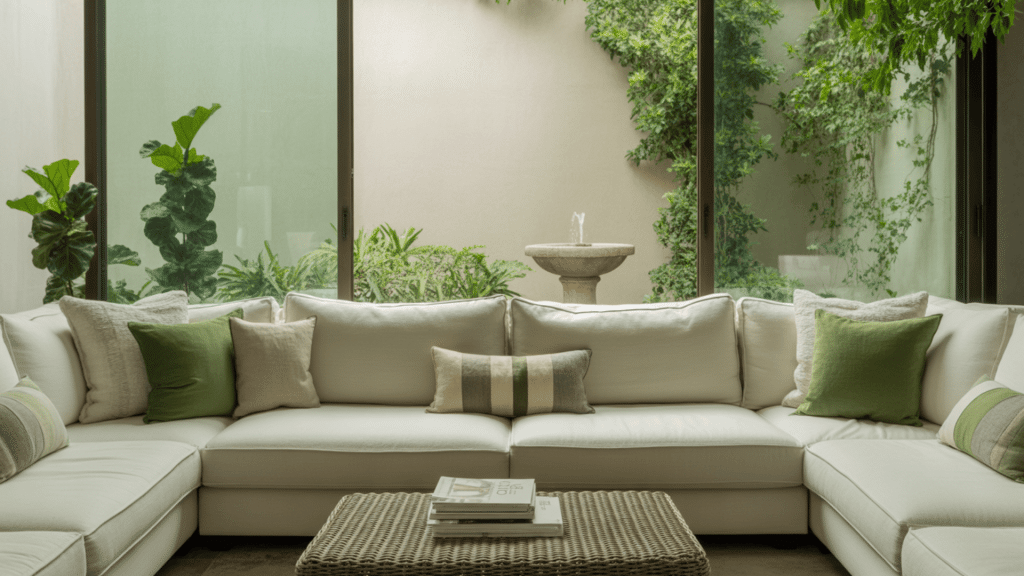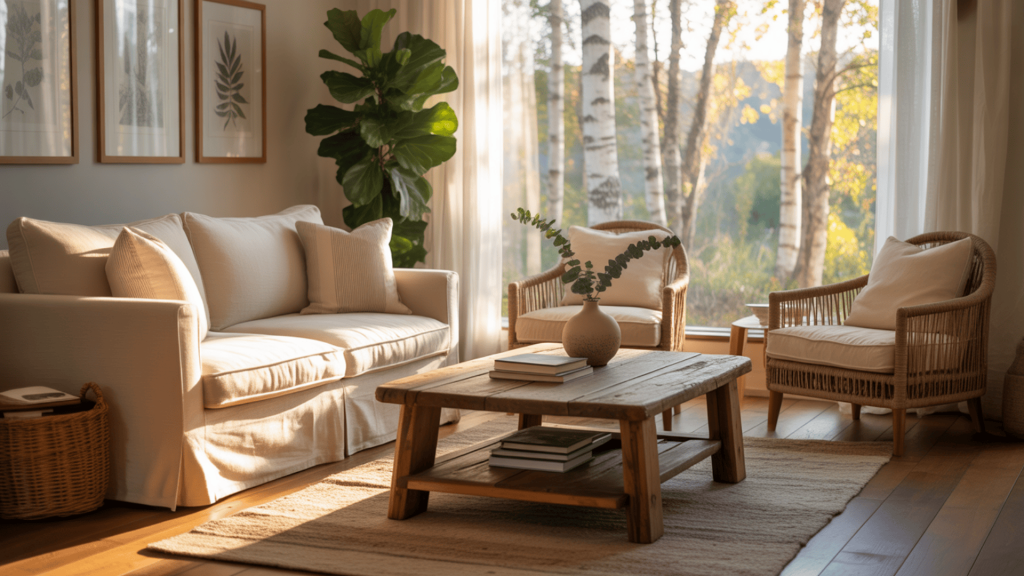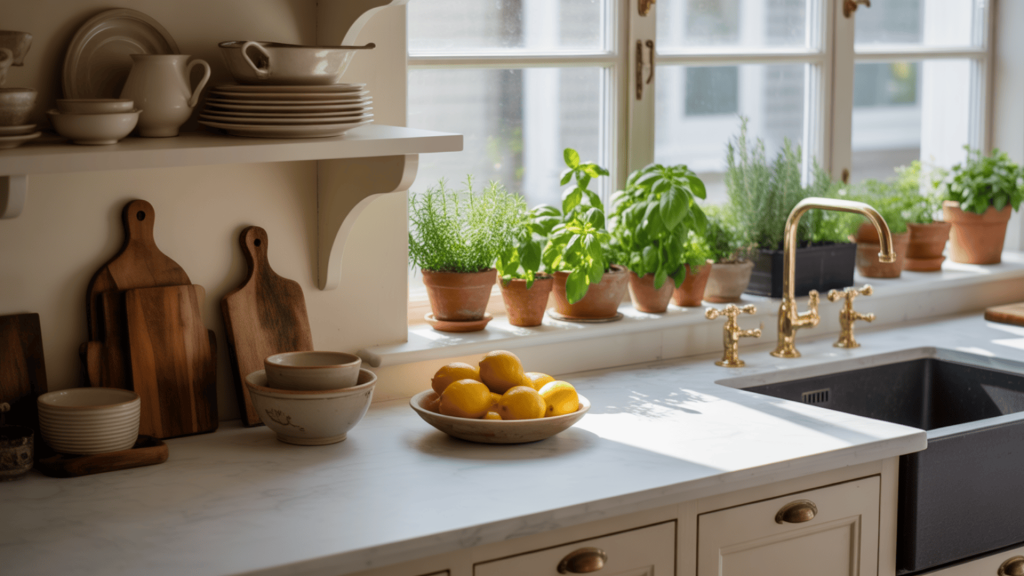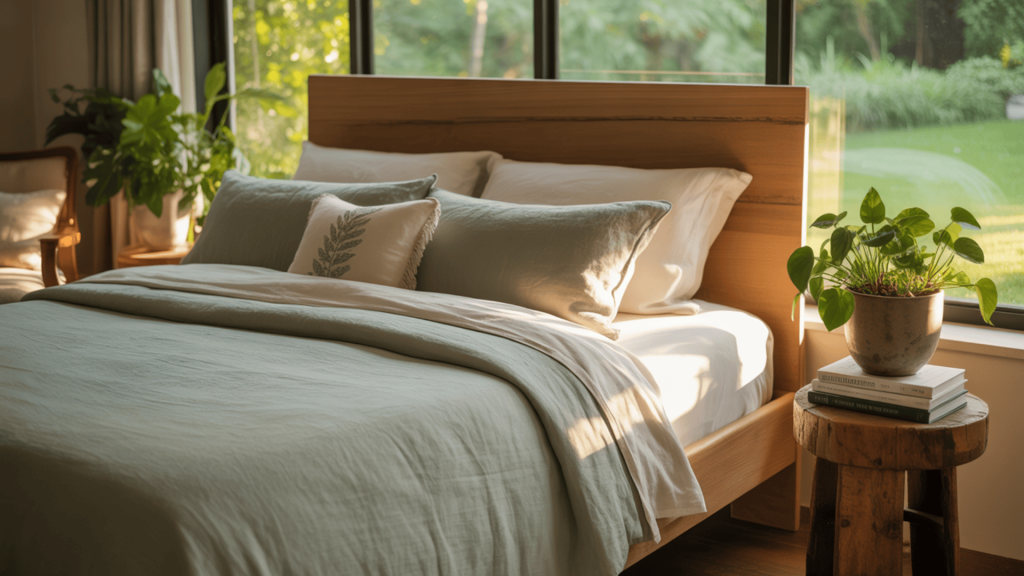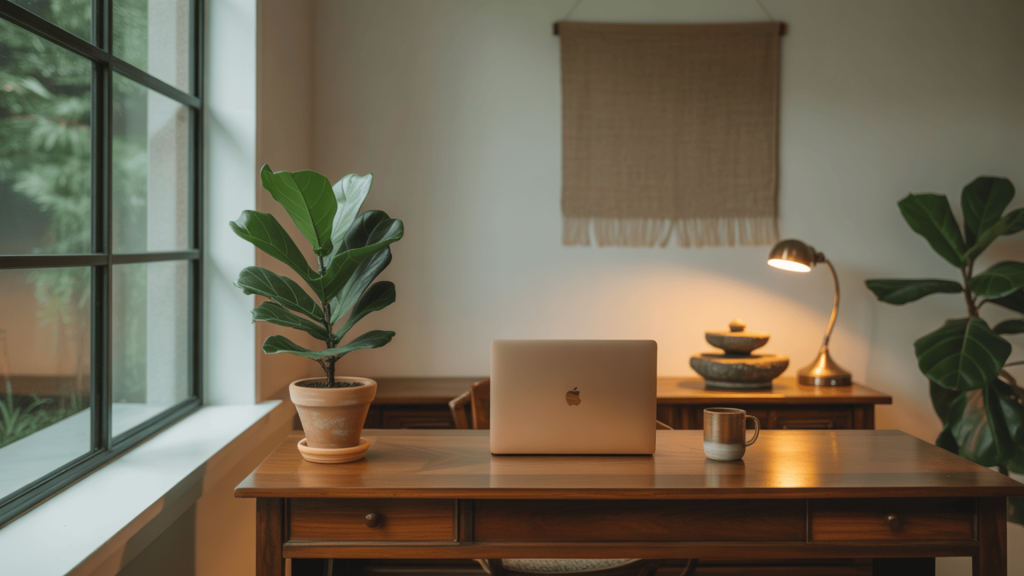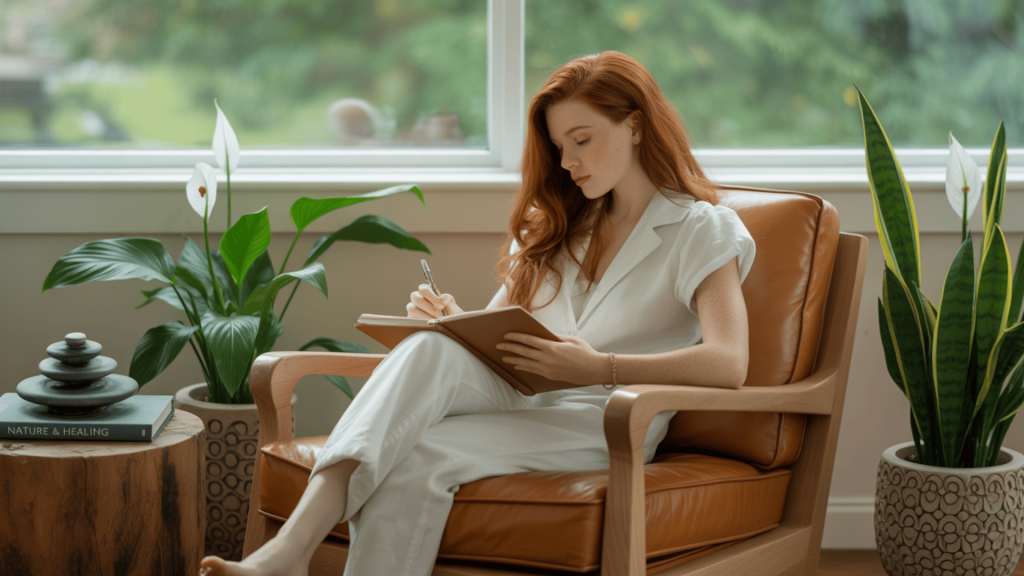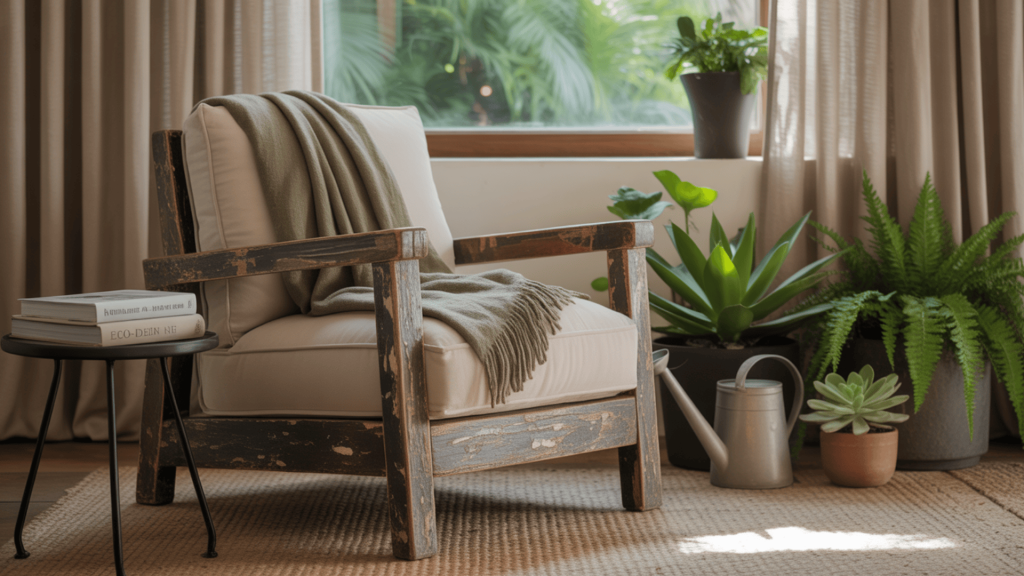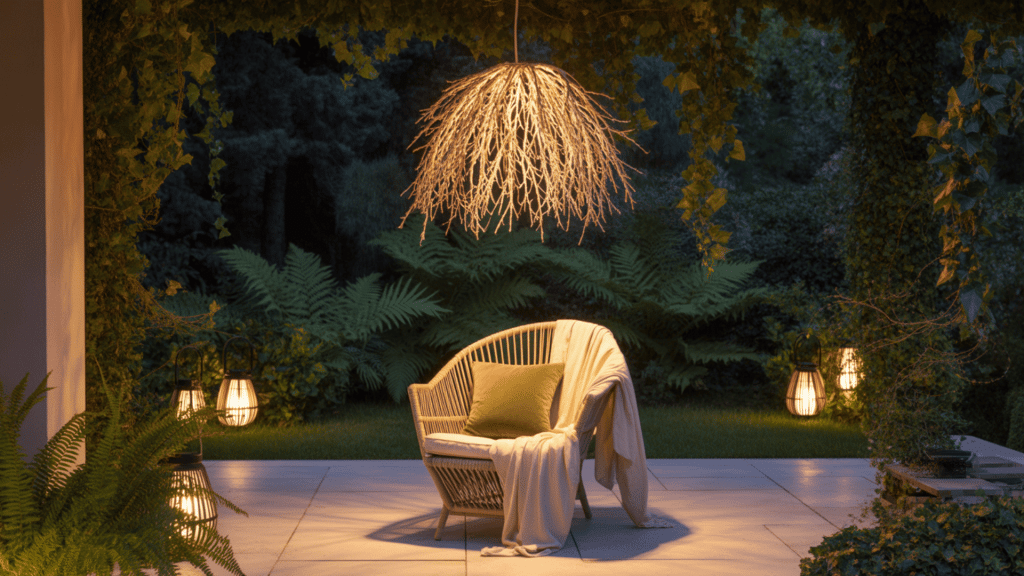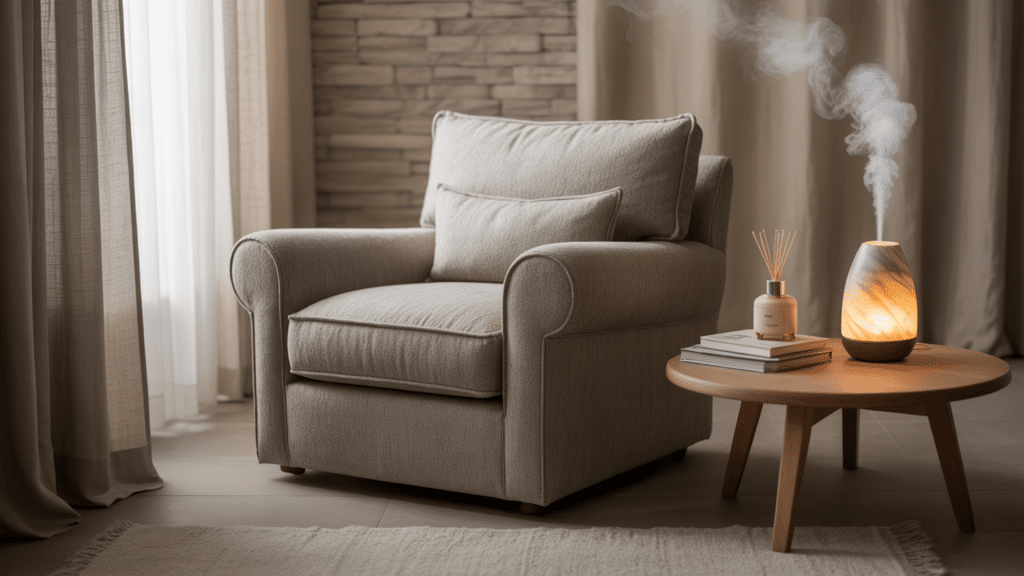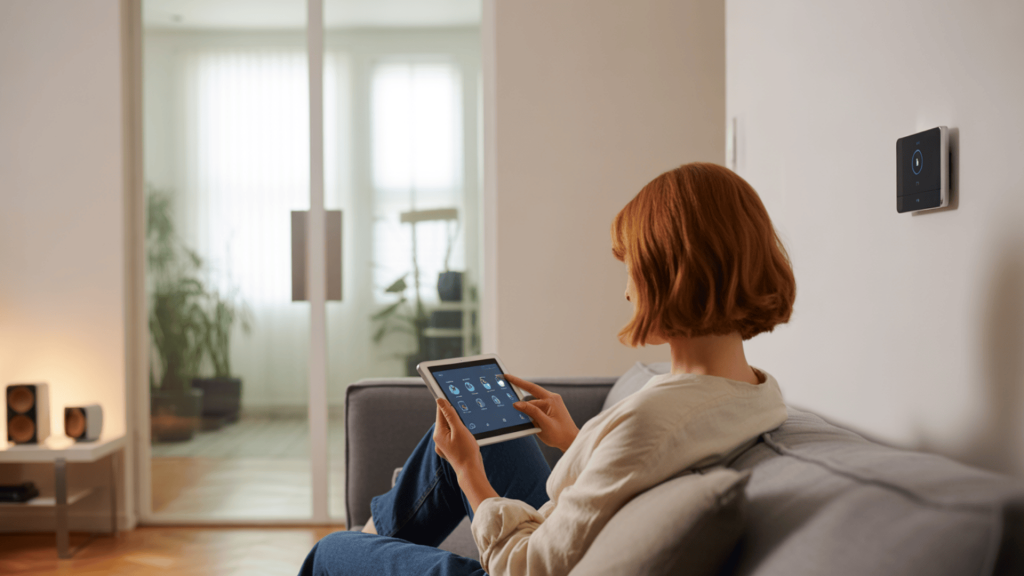Craving a home that feels alive?
Nature-inspired interior design brings the outdoors in, creating spaces that calm, energize, and heal.
Beyond simply adding a plant or two, this approach transforms rooms through natural light, organic materials, and earth-toned palettes.
Modern homes often disconnect us from nature’s rhythms, but our bodies and minds still hunger for those connections.
That’s why biophilic design has surged in popularity—it satisfies a primal need while offering proven health benefits.
From reduced stress to improved sleep and creativity, these nature-infused spaces work with our biology, not against it.
Natural design principles can transform any space, regardless of size or budget.
What is Nature-Inspired Interior Design?
Nature-inspired interior design brings the outdoors inside your home through thoughtful choices that mirror the natural world.
This approach goes far beyond simply adding a few plants to your living room.
It’s about creating spaces that feel connected to nature at a deep level.
The concept draws from biophilic design principles—our innate human connection to nature.
When you walk into a room designed this way, you might notice sunshine coming through windows, natural materials like wood and stone, gentle curves reminiscent of hills or waves, and colors found in forests, beaches, and mountains.
Since the pandemic, more people want their homes to feel like sanctuaries.
This design approach offers real benefits for your mood and health.
Nature-inspired design is now one of the top trends of 2025 because it combines beauty with genuine wellness benefits.
People who work from home find that these spaces help them feel more productive and content throughout the day.
Unlike other passing fads, this approach stems from our basic human need for natural connection—making it both timeless and currently in high demand.
The Core Pillars of Biophilic Design
Biophilic design works with how humans naturally respond to their surroundings.
This way of designing spaces taps into our built-in need to connect with the natural world, even when we’re indoors.
The following table outlines the key pillars that support effective nature-inspired spaces in any home:
| PILLAR | WHAT IT INCLUDES | HOW IT BENEFITS YOU |
|---|---|---|
| Direct Nature Contact | Sunlight, fresh air, plants, water features | Reduces stress, improves mood, enhances air quality |
| Indirect Nature Hints | Natural colors, patterns that mimic leaves or water, materials with visible grain | Creates subconscious connections to nature, adds depth to spaces |
| Spatial Experience | Room layouts that feel both open and sheltered, with good flow between areas | Makes movement through spaces feel natural, supports both social gathering and private retreat |
| Sensory Richness | Mix of textures, subtle sounds, natural scents | Engages all senses in a balanced way, prevents spaces from feeling flat |
Heart rates slow down, thinking becomes clearer, and we often feel more creative.
This isn’t just about making pretty rooms—it’s about making spaces that work with how our brains have evolved over thousands of years.
Foundational Elements Every Space Needs
To create a truly nature-inspired home, certain key elements should be present throughout your living areas.
Think of these as the building blocks that will transform your space.
Light and Living Elements
The foundation of any nature-connected space begins with the elements that bring life and energy into your home.
- Natural light from windows, skylights, or light tubes creates changing patterns throughout the day.
- Indoor plants purify air while adding life and movement to static spaces.
- Water features, even small ones, add a gentle sound and reflect light.
- Day-night lighting that shifts from bright and cool to warm and soft.
- Window treatments that allow for both privacy and maximum light flow.
These living elements change subtly throughout the day and seasons, reminding us of the natural rhythms that our bodies respond to on a deep level.
Materials and Sensory Features
The materials you choose form the tactile backbone of your nature-inspired space, creating both visual interest and sensory richness.
- Wood with visible grain patterns for furniture, flooring, or accent pieces.
- Stone elements like countertops or decorative items add weight and permanence.
- Natural textiles, including cotton, linen, wool, and hemp, for comfort.
- Colors found in nature: greens, browns, blues, and warm earth tones.
- Curved lines and organic shapes that mirror forms found in the natural world.
These material choices help create spaces that feel grounded and authentic, avoiding the cold or artificial feeling that can come with synthetic alternatives.
Applying Nature-Inspired Design to Each Room
Creating a consistent feeling throughout your home doesn’t mean each room should look the same.
Different spaces can highlight different aspects of the natural world.
1. Living and Gathering Areas
Living rooms serve as the heart of most homes.
Position seating to take advantage of natural views when possible.
A wooden coffee table with visible grain adds warmth, while plants of varying heights create visual interest.
Natural fiber rugs not only feel good underfoot but also help absorb sound for a more peaceful environment.
What to Consider: Artwork depicting landscapes or natural forms to reinforce the connection to the outdoors.
2. Kitchen Connections
The kitchen offers unique opportunities to incorporate nature.
Stone countertops provide both beauty and function.
A small herb garden near a sunny window adds life and fresh cooking ingredients.
Open shelving stocked with wooden cutting boards and ceramic dishes creates a warm, lived-in feeling.
What to Consider: Fixtures in brass or copper that will develop a natural patina over time, telling the story of your home.
3. Bedroom Retreats
Bedrooms should feel like peaceful sanctuaries.
Choose bedding made from natural fibers that breathe well through the night.
Wooden furniture anchors the space while feeling warm. Limit electronics, replacing them with simple pleasures like a small reading nook near a window.
What to Consider: A few carefully chosen plants that thrive in indirect light add life without requiring much maintenance.
4. Bathroom Sanctuaries
Turn bathrooms into mini-spas with thoughtful natural elements.
Plants that love humidity, like ferns and orchids, thrive in these spaces.
Natural stone tiles or countertops add an earthy texture.
A wooden stool or bath caddy introduces organic material.
What to Consider: A shower curtain with a subtle pattern that hints at leaves or water rather than bold graphics.
5. Productive Workspaces
Home offices benefit enormously from natural elements.
Position your desk near a window when possible, as natural light improves focus and mood.
Add at least one plant within your line of sight to reduce stress during work hours.
Natural materials like a wooden desk help create a sense of stability and permanence, while good task lighting prevents eye strain during focused work.
What to Consider: A small indoor fountain for gentle background sounds that mask noise distractions while creating a sense of calm.
Emotional & Mental Health Benefits Backed by Science
The effects of nature-inspired spaces go beyond looking nice.
Research shows real health improvements when we spend time in biophilic environments.
Hospital studies reveal that patients with views of nature typically recover faster than those facing brick walls.
Their need for pain medication decreases, and they report higher satisfaction with their care.
In workplaces, employees with access to natural light and plants show lower stress hormones, better attention spans, and fewer sick days.
At home, these same principles apply.
Rooms designed with natural elements help lower cortisol levels while improving sleep quality.
The gentle sensory input from natural materials and sounds can help restore mental energy after demanding tasks.
Sustainability and Ethical Choices in Biophilic Design
True nature-inspired design must consider its impact on the environments it celebrates.
When we bring elements of the outdoors into our homes, we should do so in ways that respect and preserve those natural resources.
Making Responsible Material Choices
When bringing nature inside, we must consider our impact on the outdoors.
Choose products made with sustainable practices and transparent supply chains.
Look for furniture built from legally harvested wood with FSC certification, or better yet, made from reclaimed timber.
For textiles, seek out organic cotton, hemp, or wool produced with a low environmental impact.
Consider the full lifecycle of items—can they be repaired, recycled, or biodegraded?
Supporting companies with clear environmental commitments helps push the entire industry toward better practices.
Energy and Resource Efficiency
A truly nature-inspired home works with natural systems rather than against them.
Position furniture to take advantage of natural cooling breezes in summer.
Use thick curtains to retain heat in winter.
Choose LED lighting with warm color temperatures that use a fraction of the energy of older bulbs.
Consider how water moves through your home—could you capture shower water for plants or install low-flow fixtures?
These thoughtful choices reduce your environmental footprint while often saving money over time.
Real-World Inspirations and Trends for 2025
As we move through 2025, certain nature-inspired design approaches have gained particular popularity.
1. Vertical Greening Solutions
Living walls make bold statements in homes of all sizes.
These vertical gardens bring dramatic plant life into spaces without sacrificing floor area.
Technologies have improved, making maintenance easier than in previous years.
For those not ready for a full living wall, smaller modular systems focused on herbs in kitchens offer both beauty and function.
Preserved moss walls provide a similar visual impact with virtually no upkeep, perfect for busy households.
2. Nature-Inspired Lighting
Lighting designs now subtly incorporate natural forms without being literal.
Look for fixtures that create dappled light effects similar to sunshine through tree leaves.
Adjustable systems that shift from bright, cool morning light to warm evening glow help maintain your body’s natural rhythms.
Solar-powered options for outdoor spaces extend the natural feeling into gardens and patios, creating gentle illumination that doesn’t contribute to light pollution.
3. Organic Forms and Layouts
Furniture increasingly features gentle curves rather than sharp angles.
This shift reflects forms found in landscapes—rolling hills, river bends, and natural asymmetry.
Room layouts now prioritize flow and connection, with fewer hard barriers between spaces.
Modular pieces that can be rearranged based on changing needs recognize that flexibility is itself a natural quality, allowing homes to evolve organically over time.
4. Sensory Richness
The most successful nature-inspired homes engage all senses.
Natural scents from essential oil diffusers create subtle atmospheric layers.
Acoustic elements like wooden panels or fabric wall coverings improve sound quality.
Varied textures invite touch, from rough stone to smooth wood grain.
These multisensory spaces feel more complete and satisfying to inhabit, creating homes that truly nurture those living within them.
That’s a Wrap
The beauty of nature-inspired design lies in its timelessness.
While trends come and go, our connection to the natural world remains constant.
Small changes—more sunlight, a wooden table, or plants—create noticeable shifts in how spaces feel and function.
The rooms you create will work with your body’s natural responses, helping you feel more centered, creative, and at peace.
Nature-inspired spaces don’t just look different; they feel different.
They breathe.
Most importantly, they reconnect us with something essential that modern living often strips away, our place in the natural world.

